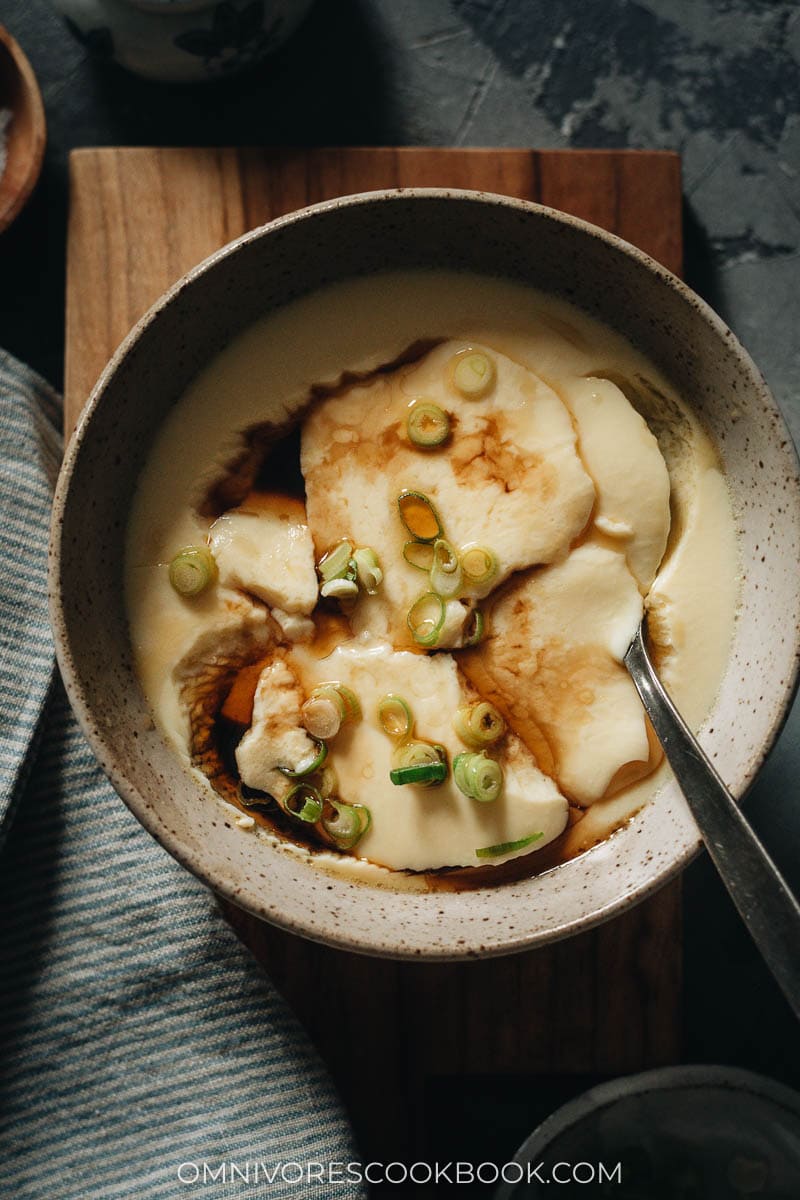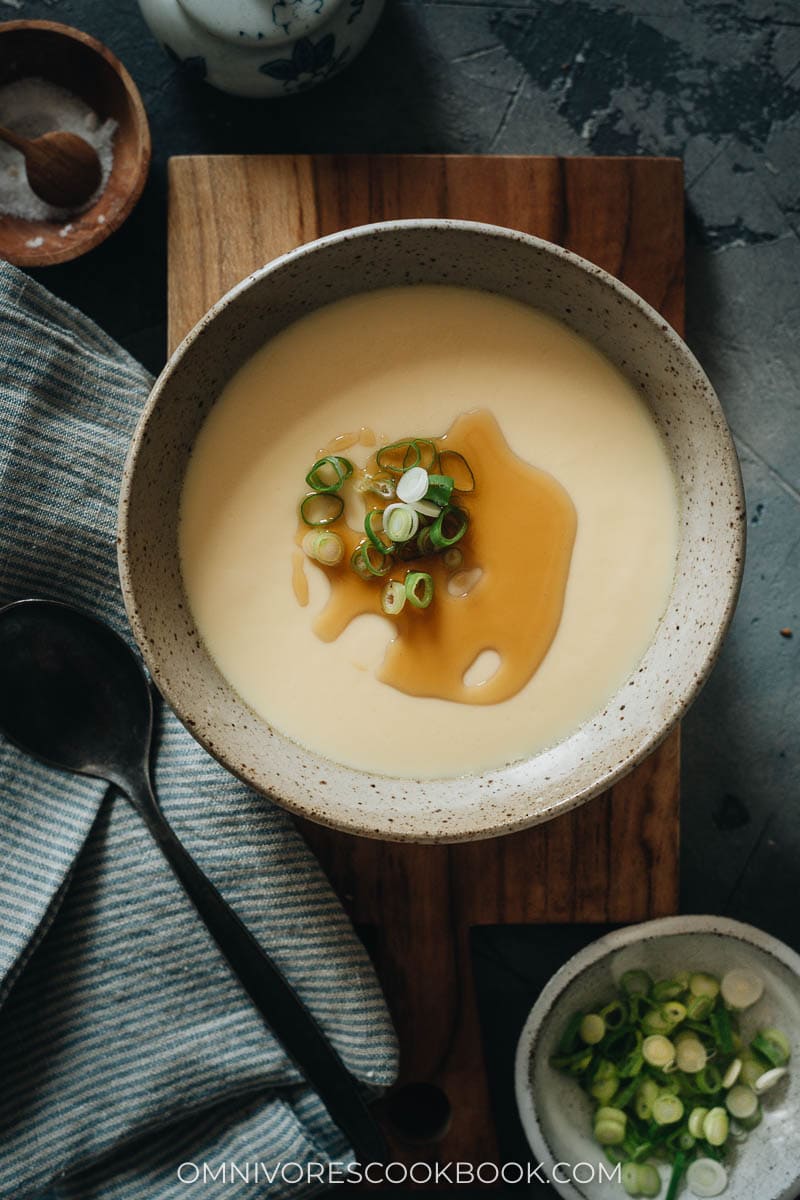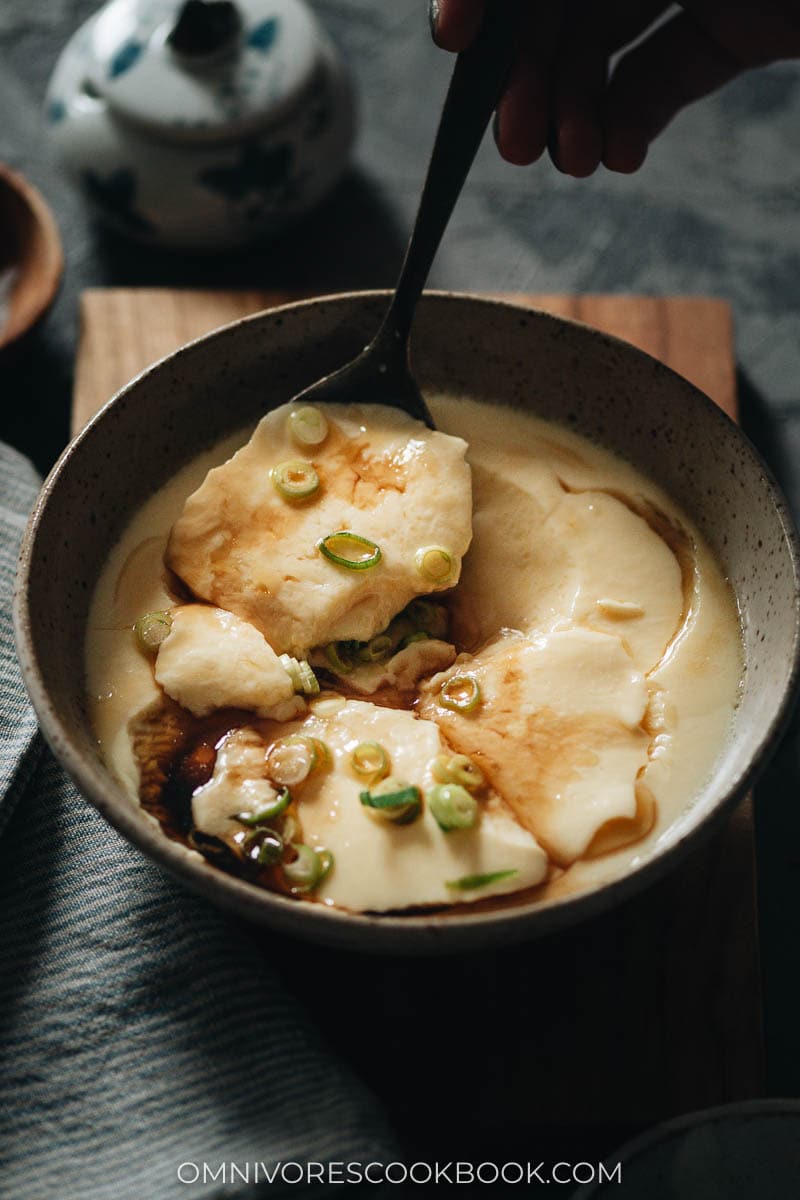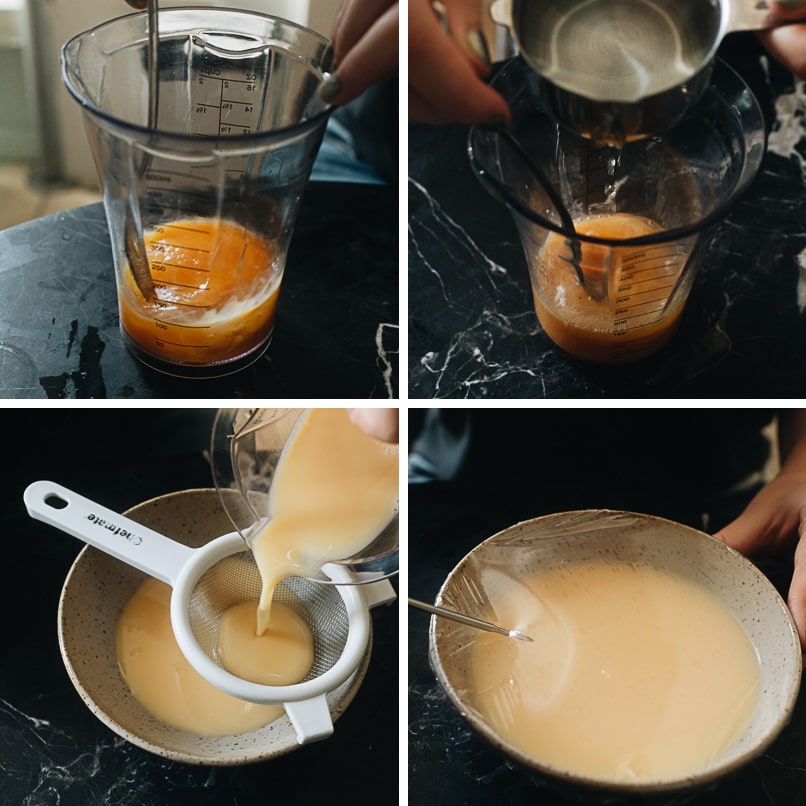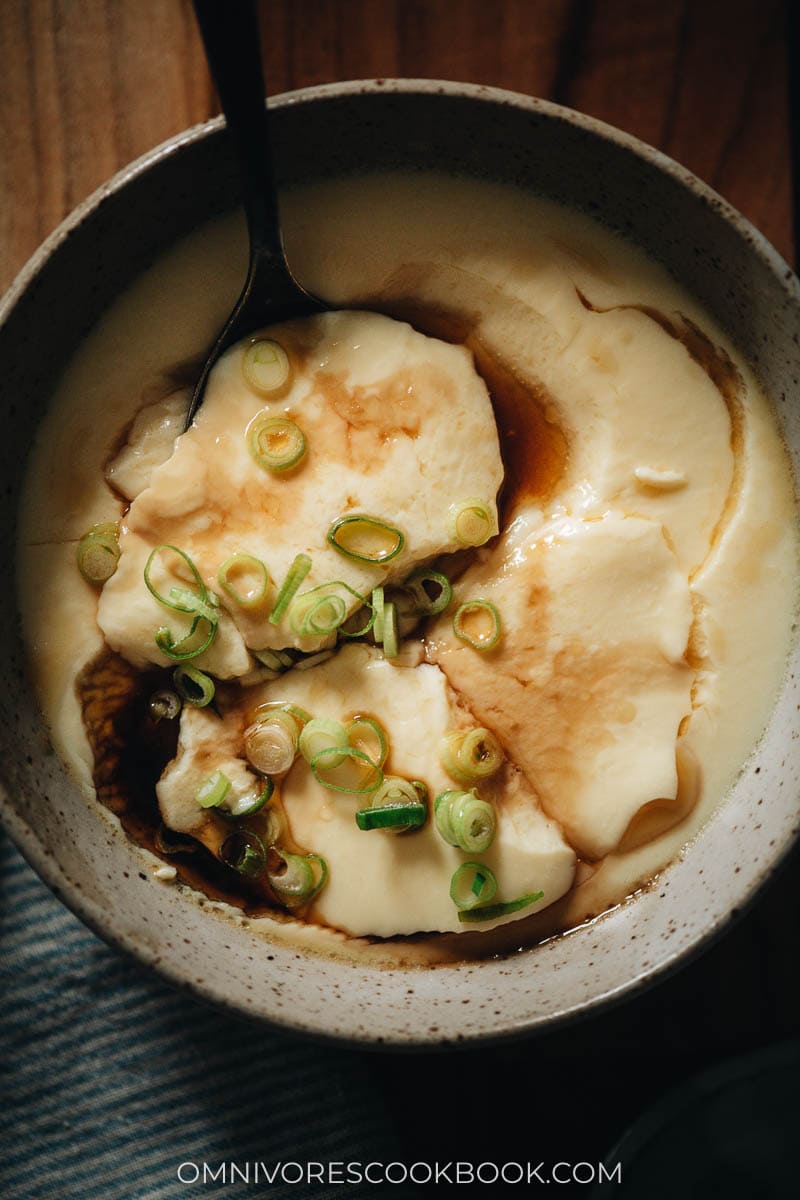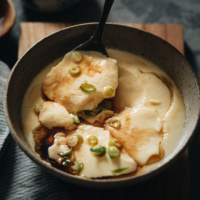Chinese steamed eggs bring back happy memories of my childhood. My mom would always make this homestyle dish for me and whenever I make it, I’m instantly a kid again in those happy and wonderful days when life was much more carefree. Whenever I want something comforting for breakfast, or something warm and soothing when I’m feeling under the weather, Chinese steamed eggs are usually the answer. Also, I must confess that I love eggs just about any way you can make them. There are so many ways to make them too. But if you love eggs and haven’t had Chinese steamed eggs, you’ve been missing out. Now you can make them in less than 20 minutes with just five ingredients that you probably already have in your kitchen right now. You might be wondering what Chinese steamed eggs taste like. With this cooking method, you get to taste the freshness and flavor of the eggs. They’re accentuated with just a little soy sauce, sesame oil, and green onion for added fragrance. The texture is very smooth and silky, a perfect complement to the elegant flavors.
Chinese steamed eggs
Other Asian countries also make steamed egg dishes, but the Chinese version is my favorite because it’s simple yet hearty. It allows the taste of the eggs to shine, and if you love eggs as much as I do, you’re going to appreciate it. I prefer my Chinese steamed eggs to be extra soft so I use more water, just like my mom always does. But if you’d prefer a firmer texture, you can certainly create it by reducing the water. It’s a bit of a balance as you’ll see in my steps below. Too much water will prevent the eggs from setting properly.
Cooking process
For Chinese steamed eggs, you beat the eggs with water and steam them to create a soft egg curd and then top it with the accents. Then steam it until the eggs are just set. Add the garnish you prefer, and enjoy!
Cooking notes
Super smooth texture
Just a trick my mom taught me. You’ll want to add warm water (just above body temperature) to your beaten eggs to temper them. It will ensure the texture becomes smooth and silky once cooked. Ever since she taught me that, I’ve been using it to make my Chinese steamed eggs come out just the way I remember her making them for me. If you’re not sure about the water temperature, simply boil some water and use 1 part boiling water and 1 part room temperature water.
Water volume
The water volume will determine the texture of the steamed eggs. My favorite steamed eggs use as much water as possible so the eggs will just set and form a very soft curd. The golden ratio is 1 part egg to slightly less than 2 parts water. The most accurate way is to use a measuring cup. If you do not have a measuring cup, the safest way is to use 2 large eggs (about 1/2 cup) with 3/4 cup water. So the eggs will set and the texture will remain soft.
Cooking time
The cooking time can vary depending on the container you use. I highly recommend using a heat-proof glass container or bowl for the dish. It will heat up faster and cook the eggs more evenly. For aesthetics’ sake, I used a ceramic bowl in my recipe. It requires a slightly longer cooking time. It worked out nicely but it did require some trial and error for me to figure out the perfect cooking time. I’ve provided detailed instructions in the recipe below. If you like this dish and plan to cook it a lot, you should use one bowl of your choice and tweak the cooking time until it reaches the desired consistency. But rest assured, even if you slightly overcook the eggs, they will still turn out tasty. The steamed eggs will be silky and soft, with a texture that’s more like pudding than a soft curd.
How to serve the steamed eggs
As I mentioned, steamed eggs are a classic breakfast dish in China, though you can eat them as a side for any meal or any time of the day as a snack. I typically like to make them when I need something comforting or feel under the weather. It’s also a great dish for small kids, because the texture of the eggs is very tender and their flavor mild. I hope it will become an ultra comforting dish for you as well! Want to learn more about Chinese Cooking? Sign up my newsletter to receive the 5-Day Chinese Cooking Crash Course and recipe update! If you give this recipe a try, let us know! Leave a comment, rate it (once you’ve tried it), and take a picture and tag it @omnivorescookbook on Instagram! I’d love to see what you come up with.
More homestyle comfort food
Bok Choy Soup10-Minute Spam RamenClassic Tomato and Egg Stir-Fry (西红柿炒鸡蛋)Chinese Napa Cabbage with Glass NoodlesChinese Chive Pockets
Lilja Walter is a part of the Omnivore’s Cookbook team and worked closely with Maggie to develop and test this recipe.
